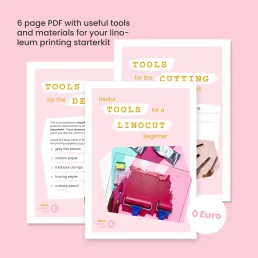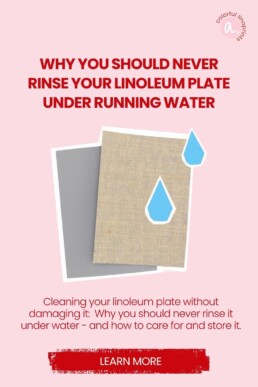
How to Clean Linoleum Blocks Without Ruining Them – Essential Tips for Linocut Artists
Cleaning your printmaking tools is of course part of the process – but there’s a critical trap that can ruin your linoleum plate if you’re not careful: rinsing it under running water.
I will help you understand linocut printing step by step, try it out for yourself, and create your own prints.
What Happens When Linoleum Gets Too Wet
Traditional grey or brown linoleum has a backing made of jute fibers. If that backing gets soaked, it contracts as it dries. The result? Your block becomes warped, bending upward in a convex shape – like it “dries crooked.”
Unfortunately, once this happens, it’s almost impossible to fix. Printing with a warped block is frustrating and inaccurate. The only possible solution would be gluing it onto a rigid surface — but luckily, you can avoid that altogether!
How to Clean Linoleum Plates Properly
You don’t need running water to remove ink after printing.
A bowl of water, a sponge, and some dish soap are enough – assuming you’re working with water-based inks, of course! My recommendations for beginner-friendly inks are here.
Extra tip: An old towel or dishcloth is perfect for cleaning — but not as you might expect. Place your lino block on top of it to prevent moisture from soaking into the jute fibers!
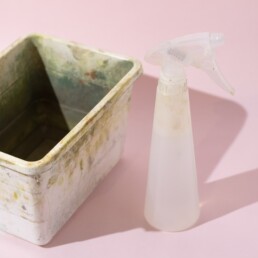
A box with water and a spray bottle
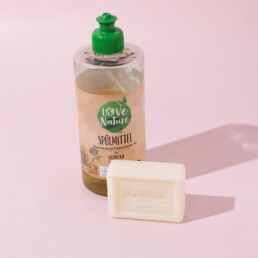
Dish soap or a simple bar of soap
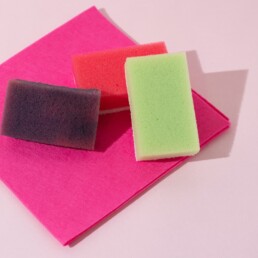
Thin dish sponges and cloths
Proper Storage = Longer-Lasting Plates
Proper storage is just as important. Linoleum blocks should be kept flat and dry.
That way, they won’t bend or collect dust on the surface.
If you print often, it’s worth setting up a dedicated drawer or folder to store your blocks — neat, accessible, and protected. I store them in plastic boxes called “SAMLA” from IKEA.
More Tips in My Online Course
In my online linocut course, there’s an entire module dedicated to cleaning and storing your printing tools.
In three video lessons, you’ll learn:
✔ How to set up a practical, space-saving cleaning station
✔ Simple rules to keep your tools in perfect shape
✔ The best way to store your materials for long-lasting quality
I’d love to welcome you to my course and guide you on your creative journey into the colorful world of linocut!

